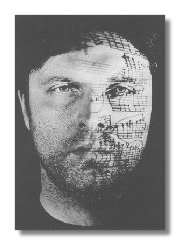
The Internet's Premier Classical Music Source
Related Links
-
Find CDs & Downloads
Amazon - UK - Germany - Canada - France - Japan
ArkivMusic - CD Universe
Find DVDs & Blu-ray
Amazon - UK - Germany - Canada - France - Japan
ArkivMusic-Video Universe
Find Scores & Sheet Music
Sheet Music Plus -
Recommended Links
Site News
James MacMillan
World Premieres 1997

I a Meditation on Iona
Ninian
Vigil
I a Meditation on Iona
" Essence of Iona "
"The problem with most collaborations between composers and visual artists is that, though they might set out together, the music and the painting or the sculpture tend to develop in their own way and end up not knowing each other. But A Meditation on Iona, the latest of the Scottish Chamber Orchestra's City of Glasgow commissions, represents a true partnership in that sound and the vision are mutually enhancing."
"The authentic way to experience the collaboration will be to hear James MacMillan's music for strings and percussion in view of Sue Jane Taylor's sand-blasted glass panels, the latter mounted against a black background and so illuminated as to offer an eerie negative image of Iona seen from across the sea. The composer and sculptor are clearly both impressed not only by the beauty but also by the religious associations of the island, and they have both attempted to design textures which allow something of that spiritual dimension to be perceived beyond the surface."
Gerald Larner writing in The Times
Ninian
"Sixteen hundred years after his arrival in Galloway, Ninian has become the patron saint of an epic clarinet concerto…Ninian is far more than a mere test of endurance, however. As John Cushing demonstrated in its first performance with Paul Daniel and the Royal Scottish National Orchestra in the Usher Hall, Edinburgh, its primary motivation is spiritual rather than technical. During its three movements and almost 40 minute duration, it covers not only the whole pitch and dynamic range of the solo instrument but also an extraordinary variety of expression, from crude violence to mystic contemplation. The concerto is, in fact, a frankly programmatic examination of three legends associated with St Ninian."
"Even so, below the eventful surface – the orchestral bellowing of an angry bull in the opening story of death and resurrection; the wide-ranging clarinet nocturne in a story of a crippled boy restored to health in the middle movement; the prolonged prayer and the hymn tunes in the largely slow-moving finale – there is a consisten motivic undercurrent. That is one element which adda a dimension of sustained thought to moments of apparently mindless percussive aggression and naively descriptive colouring. The other is the role of the soloist, who carries an eloquent authority throughout."
Gerald Larner writing in The Times
Vigil
LSO/Rostropovich at the Barbican
"The atmosphere could have been cut with a knife after the premiere of James MacMillan's symphony, Vigil. Only the prospect of Maxim Vengerov as soloist in Tchaikovsky's Violin Concerto drew me back into the auditorium after the interval, for there was a feeling that MacMillan, in his finest work yet, had said all that needed to be said. Vigil is a breathtaking piece, potent, haunting and magnetic, and with a profound inner beauty which speaks of music conceived by the soul."
"With Vigil MacMillan has completed the third panel of his triptych of commissions from the London Symphony Orchestra, the previous two being The World's Ransoming and the Cello Concerto. This premiere launched a month-long survey of MacMillan's music, continuing on the South Bank from Thursday."
"Mstislav Rostropovich conducted the LSO in a performance which had every sign of thorough preparation, not only of the music's challenging technical aspects but also in the appreciation of its spiritual substance."
"The three works relate to the events of Easter: this final one, centred on the vigil, takes its inspiration from the implications of light and regenerated life. There are, as often with MacMillan, allusions to Latin chant, serving not merely as points of easily identifiable reference but as a motivic force giving impetus to MacMillan's imagination over a broad symphonic canvas."
"Vigil, in three movements, lasts a good 50 minutes, but its logic, control and mesmerising fertility of idea make it seem much less. Or rather, the way in which MacMillan articulates his material supports and nourishes the musical patterns so that the whole symphony seems to be a naturalprogression from its early dark murmurings towards the incandescence of the finale."
"MacMillan's familiar virile energy is unleashed here, and in the second movement he deploys brass around the auditorium to radiant effect. His mastery of silence is also extraordinary. It rarely suggests calmness: there are undercurrents of disquiet and fluttering uncertainty."
"Until, that is, the closing bars, where, with a visionary touch, he lets the music subside, leaving high pianissimo strings and the simple tap of the triangle to convey a final image of light and the unfathomable."
Geoffrey Norris writing in the Telegraph
If you have any comments, additions or questions I would be really pleased to hear from you!
Copyright © David Charlton, 1995, 1996, 1998.
This is an "unofficial" web page for James MacMillan
The music of James MacMillan is published by Boosey and Hawkes













